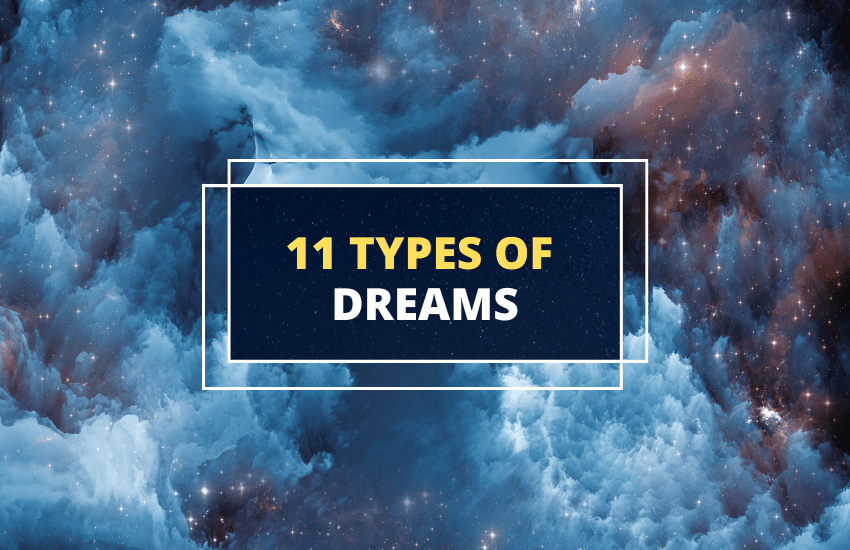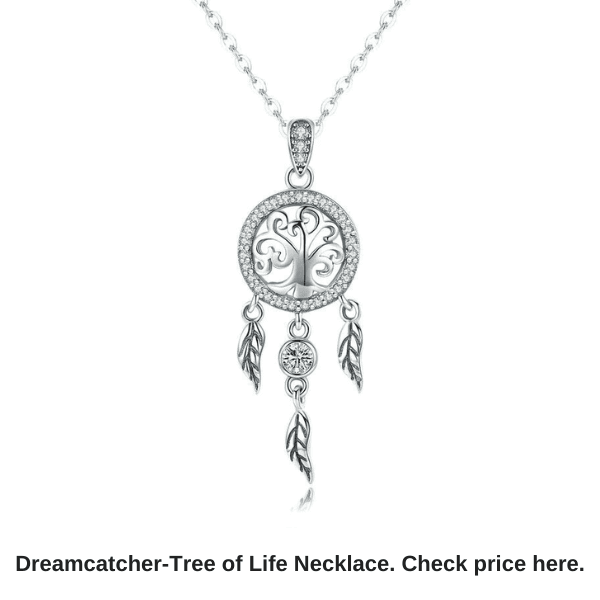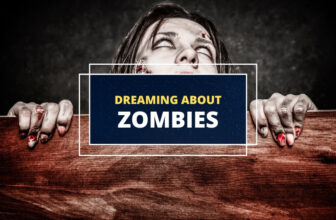
There are many types of dreams that a person can have, whether it’s while sleeping or waking. In this article, let’s take a look at 11 types of dreams.
Daydreams
Have you tried escaping from reality by visualizing the past, present, and future throughout the day? Unlike all other types of dreams, daydreams happen when you’re awake and conscious. They’re often triggered by a memory, a situation, or senses—sight, sound, touch, taste, or smell. While some people can handle it, it simply takes over for others.
Daydreams are the kind of dreams that satisfy hidden wishes, overcome a frustrating situation, or play out plans for the future. In the past, it was thought that only unfulfilled individuals created fantasies, but by the late 1980s, daydreams were considered to be a normal part of the mental process. Some research even suggests that daydreaming can contribute to positive well-being.
Normal Dreams
Did you know that most elements of dreams are associated with your experiences while awake? Many scientists also believe that dreams help us rehearse for challenges we’re currently facing in real life. Normal dreams typically involve people or current issues in life, but they can get more bizarre as the night goes on. A normal dream will vary from one person to another, but the happier you are, the more pleasant your dreams may be. They tend to be more visual than involving other senses like touch or smell.

Vivid Dreams
While we may consider any dream that we experience as “vivid,” vivid dreams are actually intense dreams that feel real. Instead of experiencing them visually, these dreams seem like we feel everything through our senses by moving, touching, and smelling.
Some vivid dreams are highly emotional, suggesting that they also play role in emotional stability. We tend to remember things better when we have strong emotions attached to them, explaining why they’re easily remembered than normal dreams.
Recurring Dreams
Some people have the same or similar dreams that repeat more than once. One theory suggests that the dream repeats because of unresolved issues, a trauma in the past, and/or internalized fears. Sometimes, recurring dreams have the themes of falling, being chased, and having confrontations. Sometimes, these dreams are associated with nightmares.
Nightmares
Nightmares are dreams that are scary and disturbing, so much so that they usually wake us up. The most common themes of nightmares are physical violence, being hunted, death, or dying so they cause strong feelings of fear and anxiety. According to experts, nightmares may be caused by watching something frightening, or a recent traumatic event.
The ancients thought that nightmares were caused by evil spirits. Today, they’re believed to be the result of emotional difficulties, unresolved anxieties, sleep deprivation, or being ill. In some instances, people with anxiety disorders, sleep disorders, mental health conditions, as well as ones taking certain medications experience nightmares.
Night Terrors
Unlike nightmares, a night terror is a type of sleep disorder, when someone wakes up terrified but has no recollection of the dream. Some people who experience night terror are still asleep though may look like they’re awake. Most of the time, a person can wake up screaming, sweating, breathing hard, jumping out of bed, or disoriented.
In some instances, night terrors result in crying and sleepwalking while still asleep. While nightmares occur during the REM stage or deep sleep, night terrors happen during the non-REM stage, and can last from 5 to 20 minutes. Suspended somewhere between sleeping and waking, night terror shouldn’t be confused with sleep apnea and sleep paralysis—a temporary inability to move after waking up.
Lucid Dreams
One of the most interesting types of dreams, lucid dreaming is when you’re aware that you’re just dreaming and you can control the storyline of your dreams. Since you’re able to recognize your thoughts and emotions as the dream happens, you have the power to solve problems and make decisions. These are the dreams that can boost your creativity and reveal your honest thoughts.
Lucid dreaming is about experiencing consciousness while in a dream state. In lucid dreams, you can be the lead actor of the story as if you’re in a romantic, action, or adventure film. For instance, you may choose to fight instead of running away from a pursuer. However, lucid dreams are extremely rare, and only 55 percent of people have experienced one or more lucid dreams in their lifetime.
Being able to control your dreams might sound cool, but it’s a challenging thing to do. In 1959, an effective technique for inducing lucid dreams was developed. It was called the reflection technique, which involves asking yourself throughout the day if you’re awake or dreaming. Many practices the technique in order to hone their skills in differentiating a dream and a reality.
False Awakenings
False awakenings are dreams where a person thinks they’ve woken up from sleep but are actually still in the middle of a dream. Most of the time, they happen alongside lucid dreams and sleep paralysis. Most of the time, it features typical activities for the day, such as getting up, having a breakfast, taking a shower, getting dressed, and leaving for work. Eventually, the person would realize that something is not quite right, so they would recognize it as a dream and wake up.
Healing Dreams
Sometimes, dreams help us work through difficult emotions and bring balance and harmony. Even though there isn’t scientific evidence on healing dreams, many people claim to uncover truths about themselves, have a sense of purpose, spark creativity, or leave them feeling at peace through these dreams.
Metaphorical Dreams
Much about dreams remains shrouded in mystery. Some psychologists have argued that some dreams give insight into a person’s life, while others believe that they’re unreliable and inconsistent.
The German chemist Kekule, who discovered the structure of the benzene molecule, is said to have been inspired by his dream of seeing ouroboros’ in his dreams – i.e., snakes forming circles with their tails in their mouths. Apparently, the molecule itself has a circular structure unlike other compounds with a linear one.
In 1884, Elias Howe, the inventor of the sewing machine, dreamed of being surrounded by native tribesmen with spears that had a hole in point. When he woke up, he figured out that a needle with a hole would be the solution to his problem of creating the machine.
Premonition Dreams
Historically, dreams were thought to predict the future or impart wisdom. In some cultures, they’ve still considered a means of receiving messages from the spirit world. If you dream of events before they happen in real life, you may regard it as a premonition. Some also call these prophetic or precognitive dreams.
However, there isn’t a way to tell if a dream is prophetic or not, as it all comes down to what you believe. In some instances, a precognitive dream can involve visitation, where a loved one who has died may come with a message for the dreamer, which can be instructive or life-changing. Whether they actually predict things that haven’t happened yet or not remains a subject for debate.
Wrapping Up
When it comes to dreams, everyone is different. Daydreams and lucid dreams are often keys to insight and empowerment. On the other hand, nightmares and night terrors give unwanted feelings of fear, sadness, and anxiety. Scientists may not have the answers to why we have these different types of dreams, but many believe that they’re a way for us to process our waking world while we sleep.








